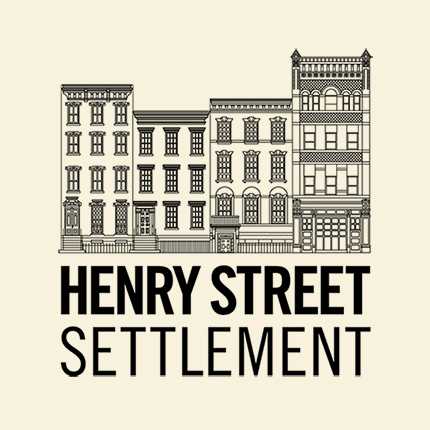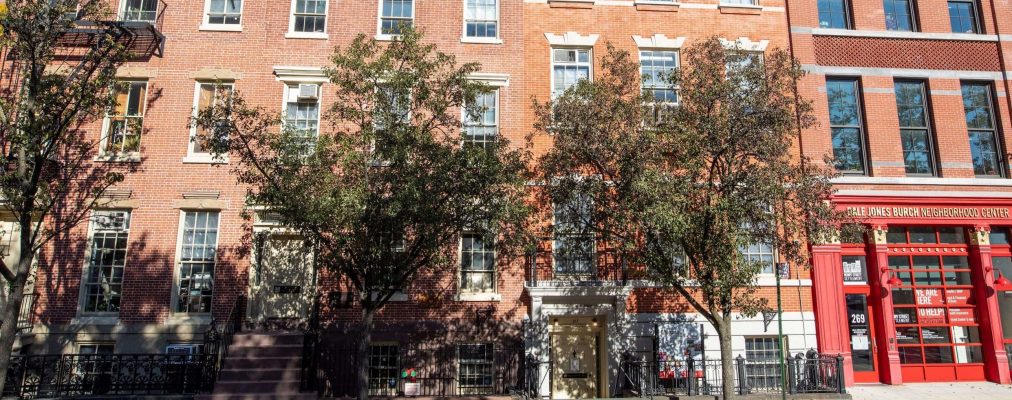Henry Street Settlement opens doors of opportunity for Lower East Side residents and other New Yorkers through social service, arts, and health care programs.
What is a Settlement House?
Settlement Houses grew out of the social reform movements of the late-nineteenth century. Early Settlement House workers were typically upper-class, urban missionaries who strove to address the concerns of urban immigrants who were suffering from squalid living conditions, disease, illiteracy, and unemployment. Many of them not only worked in poor immigrant communities, but they also came to live among the people they served — hence the term “Settlement.”
How is a Settlement House different from other social service agencies?
Settlements are unique agencies in that they are neighborhood based. They frequently offer a wide range of services that address an individual’s entire life cycle, from birth to old age. Another characteristic of Settlements has been their historic involvement in social change efforts. Time and time again they have been the innovators of ground-breaking methods in social work.
What makes Henry Street special among other agencies of its kind?
Henry Street is Progressive. Since its founding in 1893 by Progressive reformer Lillian D. Wald, Henry Street has continuously met the needs of a community that has undergone a series of rapid changes. As the ethnic and cultural character of the neighborhood changed, the agency worked to improve the lives of the new arrivals. As the social and economic climate of the urban environment fluctuated, Henry Street adapted its methods to address new difficulties of modern life.
Henry Street is Innovative. Since 1893, Henry Street has consistently been on the cutting edge of its field. As an institution, Henry Street stands for a willingness to try new things, to take on the hardest problems and address them head on. Many Henry Street programs and initiatives are the first of their kind and are recognized and replicated around the globe.
Henry Street is Successful. Every year, Henry Street makes an impact on the lives of tens of thousands of families. The agency has a reputation for delivering quality services and for equipping its clients with the tools to succeed in real life situations. To generations of alumni, the name “Henry Street” invokes memories that are dear and deeply personal. Wherever they may roam, these children will always have a home on Henry Street.
Henry Street is Diverse. Serving a “neighborhood of immigrants” in the “city of immigrants,” the Henry Street community reflects the diversity of 21st century America.
What populations does the agency serve?
While focused on the Lower East Side, Settlement programs reach all of New York City’s five boroughs — in New York City public schools, public housing developments and transitional shelters. Henry Street’s Workforce Development Center aids workers from all walks of life — from welfare-to-work participants to out-of-school youth to small business owners and degree-holding professionals. The staff members at Henry Street also come from many different cultural backgrounds, reflecting the diversity of the community they serve.
The changing face of New York City is reflected by demographic shifts in our community. Our residents include members of Chinese, Thai, Filipino, Bangladeshi, Puerto Rican, and Dominican communities, as well as descendants of the Jewish families who first immigrated to the Lower East Side in the 19th century. The rich cultural, racial, and ethnic diversity of our community underlies a sense of community among residents, providing a strong foundation for our Community Board; a vibrant artistic community; and culture-based values among many families that emphasize the involvement of the extended family in the care of children as well as older adults.
What services does the Settlement provide?
Henry Street offers programs through seven divisions: Youth Services, Primary and Behavioral Health, Senior Services, Workforce Development Center, Visual and Performing Arts/Abrons Arts Center and Youth & Workforce Development and Housekeeping Services. The Settlement offers dozens of programs in 17 locations on the Lower East Side, including:
- A senior center, a NORC (naturally occurring retirement community), Meals on Wheels and a Senior Companion Program
- An early childhood education center, including Universal Pre-Kindergarten
- Transitional housing for homeless families, single women and survivors of domestic violence; and permanent supportive housing residences
- Out-patient mental health services; and satellite clinics in public schools
- A primary care medical clinic
- Job training and placement for adults, public housing residents and out-of-school youth; and customized staffing services for small business owners
- High school equivalency prep and ESL classes
- Educational, recreational, after-school, college prep and leadership development programs for youth
- Arts programs, including instruction and performance
What is the relationship of the arts to Henry Street Settlement?
Settlement founder Lillian Wald believed that expose to the arts and opportunities for creative expression were as essential as health care and education. From its inception, Henry Street provided instruction in the arts and well-regarded performances. The Settlement’s Neighborhood Playhouse, which opened in 1915, was (and is today) on the cutting edge of avant garde theater in New York.
Some of the most influential artists of the 20th century have taught, trained and/or performed at Henry Street. Eugene O’Neill, Robert Browning, Isadora Duncan, Martha Graham, Fred Astaire, George Gershwin, Igor Stravinsky, Dizzy Gillespie, and Eartha Kitt are but a few of the artists and performers who have passed through Henry Street’s doors.
In 1975, Henry Street brought its arts programs under one roof with the establishment of The Arts for Living Center, later renamed the Abrons Arts Center. The Center was one of the first arts facilities in the nation designed for a predominantly low-income population. The Abrons Arts Center hosts classes for children and adults in dance, drama, visuals art, and music, as well as arts-in-education programming, artists-in-residence opportunities, and year-round critically acclaimed performances and exhibits.
Where does Henry Street Settlement get its funding?
Henry Street, like other Settlement houses, receives a combination of public and private funding. The proportion of funding depends on the nature of the individual program. Henry Street currently receives about 80 percent of its funding from federal, state and city sources; the balance is donated by foundations, corporations and individuals.
How can I help support Henry Street Settlement?
Henry Street Settlement is a non-profit organization that relies on the generous monetary and time contributions of supporters to operate and provide its services effectively. Volunteer opportunities are available for individuals as well as corporate groups.
There are many ways to give, including monetary donations, stock, and more. Visit our Ways To Give page to learn more.
If I become a Henry Street contributor, how will the agency keep me apprised of its activities?
Henry Street keeps its contributors apprised of its programs and activities with an annual report, a monthly electronic newsletter, a print newsletter, electronic correspondence and our updated website. In addition, tours of the Henry Street Settlement are scheduled on an occasional basis so that contributors may see first-hand how their generosity translates into good work for Lower East Side families and individuals.

